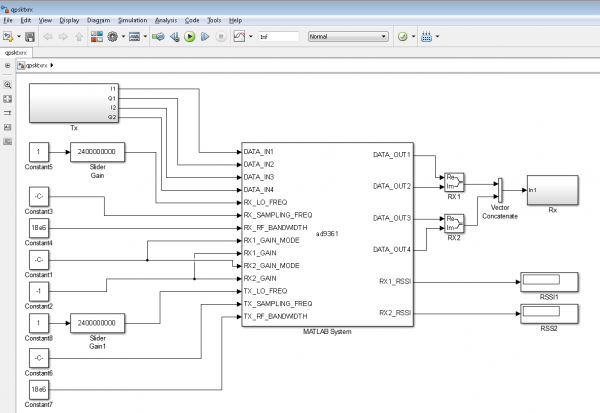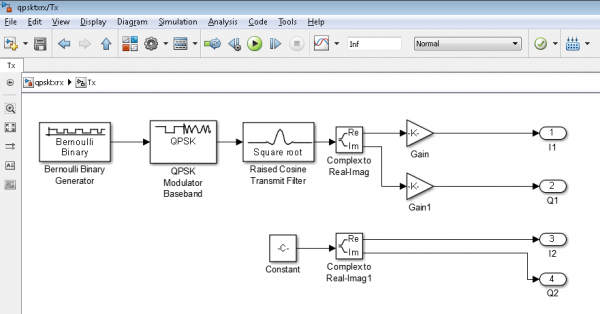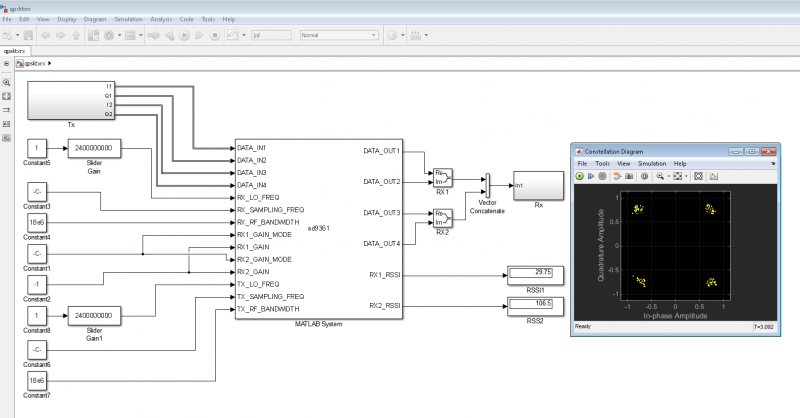

This version ( 20 Apr 2021 14:37 ) was approved by Travis Collins. The Previously approved version (05 Jun 2015 17:44) is available.
In this section, we will show a QPSK transmit and receive example, which is based on MathWorks QPSK Transmitter and Receiver Example. In this example, FMCOMMS3 is used as RF front-end, which captures the modulated QPSK signals over the air. These signals are then streamed from target to Simulink via the ad9361 block. The Simulink model is shown in the figure below, where the blocks of Tx and Rx are grouped in two subsystems.

In order to run this example, your MATLAB version should be 2014b or higher, and your license needs to include the following components:
Communications System Toolbox DSP System Toolbox Signal Processing ToolboxThe model can be found here:
In this example, we set up the target using the block's properties dialog and a configuration file. You can double click the ad9361 block in the model to find out the properties dialog settings. You can open the ad9361.cfg to look into the configuration file.
The QPSK Transmitter is shown in the figure below, which mainly consists of a baseband QPSK modulator, a raised cosine filter, and a gain block to scale up the signals before transmission:

The QPSK receiver is shown in the figure below, which consists of the following blocks:
An automatic gain control block A raised cosine receiver filter block A coarse frequency compensation block A fine frequency compensation block A timing recovery blockThe detailed description of each block can be found at MathWorks Help Document.

With everything set up properly, we can run the model and get the results below. As we can see, with the frequency compensation and the timing recovery, we can get a clear QPSK constellation.

resources/tools-software/linux-software/libiio/clients/qpsk_example.txt · Last modified: 20 Apr 2021 14:37 by Travis Collins